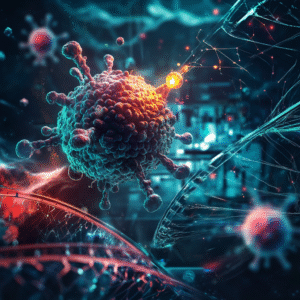Table of Contents
- Introduction: Why Scorpion Venom is So Highly Prized
- Scorpion Biology: Beyond the Sting
- Scorpion Venom in Pharmacology
- The Cuban Blue Scorpion: A Unique Endemic Species
- Vidatox 30CH: Composition and Origins
- Pharmacological Properties of Rhopalurus junceus Venom
- Vidatox 30CH: Mechanism of Action and Benefits
- Usage Guidelines: Dosage, Administration, and Precautions
- Contraindications and Safety Profile
- Storage and Handling Requirements
- Expanding Horizons: Scorpion Venom Research and Future Therapies
- Conclusion: A Novel Complementary Treatment Approach
1. Introduction: Why Scorpion Venom is So Highly Prized
Scorpion venom is one of the most expensive bioactive substances in the world, fetching up to $11,000–$12,000 per gram. Its high value stems from the venom’s complex chemical composition and its potential therapeutic propertiesin treating conditions like malaria, chronic pain, inflammatory diseases, and even cancer. Historically, many cultures have relied on various scorpion species’ venoms as folk remedies, yet only in the last few decades has modern science begun to validate these traditional uses through rigorous clinical studies.
2. Scorpion Biology: Beyond the Sting
Scorpions (Latin: Scorpiones) are an order of arachnids found on every continent except Antarctica. Over 2,400 speciesare known, with sizes ranging from tiny 13 mm specimens (Microbuthus pusillus) to large scorpions up to 20 cm, like the emperor scorpion (Pandinus imperator). While around 25 species are considered dangerously venomous to humans, most deliver stings that are painful but not life-threatening.
The term “scorpion” itself comes from the Ancient Greek “σκορπιός” (skorpiós). Though scorpions have long conjured images of danger, scientific interest has shifted toward the remarkable pharmacological potential hidden in their venom.
3. Scorpion Venom in Pharmacology
Scorpion venom is a multicomponent mixture of bioactive molecules, including peptides, proteins, enzymes, and other compounds. These substances can perform a variety of physiological actions, such as immune modulation, neurotoxicity, anti-inflammatory effects, and anti-tumor properties. Research efforts have led to:
- Immunosuppressants derived from scorpion venom peptides
- Antimalarial compounds with potent activity against Plasmodium parasites
- Experimental oncological therapies targeting tumor cells without heavy damage to normal tissues
The therapeutic potential of scorpion venom is vast, but the cost of large-scale extraction and purification remains a limiting factor. Advanced methods, including electrical stimulation, are used to obtain the venom in small, precise doses.
4. The Cuban Blue Scorpion: A Unique Endemic Species
Among scorpions used for medical research, the Cuban blue scorpion (Rhopalurus junceus) stands out. This species:
- Belongs to the large family Buthidae, which includes over 900 scorpion species worldwide
- Is endemic to Cuba, thriving in tropical conditions specific to the island’s environment
- Produces a venom with notable selectivity for cancer cells, as suggested by emerging research
For centuries, local inhabitants of Cuba used the venom of Rhopalurus junceus as a folk remedy for various ailments. In the late 1990s, Cuban scientists began formalizing this knowledge through clinical trials, eventually developing a homeopathic product known as Vidatox 30CH.
5. Vidatox 30CH: Composition and Origins
Vidatox 30CH is a homeopathic medicinal product derived from the Cuban blue scorpion. Each milliliter (about 20 drops) contains:
- Active Ingredient: Rhopalurus junceus venom 30 CH (in homeopathic dilution)
- Excipients: Ethanol and purified water
After 15 years of rigorous clinical research involving over 15,000 participants, Vidatox 30CH was officially registered in Cuba. Researchers demonstrated therapeutic efficacy and a strong safety profile, prompting further global interest in the product.
6. Pharmacological Properties of Rhopalurus junceus Venom
6.1 Pharmacokinetics
Studies show that Rhopalurus junceus venom follows:
- A two-compartment model under intravenous administration
- A non-compartmental model via oral administration
In both cases, the venom displays extensive tissue distribution. Most excretion occurs through the kidneys, highlighting the importance of adequate renal function for venom clearance.
6.2 Pharmacodynamics
Evidence suggests the venom has a higher affinity for tumor cells than for healthy tissues. When administered intravenously, it demonstrates strong tropism for lung tissue, making it a potentially important agent for certain lung cancers or metastatic diseases involving the lungs.
6.3 In Vitro Research
Laboratory studies on cancer cell lines indicate:
- Selective toxicity against epithelial tumor cells, with minimal impact on immune cells
- Induction of apoptosis and necrosis in malignant cells
- Activation of peritoneal macrophages, as measured by elevated levels of typical activation metabolites like H2O2 and NO
- DNA protection from oxidative damage, indicating antioxidant potential
- Enhanced cell death in malignant tissues
6.4 In Vivo Research
Animal studies have demonstrated:
- Significant antitumor effect when administered orally, reducing both primary tumor growth and the risk of spontaneous lung metastases
- Analgesic properties following intraperitoneal or oral doses
- Anti-inflammatory action under various routes of administration
- Marked inhibition of mammary adenocarcinoma cells in mammalian models, especially with intraperitoneal administration
7. Vidatox 30CH: Mechanism of Action and Benefits
7.1 Anti-Tumor Potential
One of the most notable aspects of Vidatox 30CH is its potential to halt tumor cell development by inhibiting cellular membranes and disrupting the formation of new blood vessels (angiogenesis) vital to tumor growth. This suggests a multifaceted approach to impair malignant cells’ survival strategies.
7.2 Anti-Inflammatory and Analgesic Effects
Vidatox 30CH has demonstrated pain-relieving properties, helping some cancer patients reduce their reliance on conventional analgesics. Its anti-inflammatory activity can also support patients who experience swelling, discomfort, or other inflammation-related symptoms.
7.3 Quality-of-Life Improvements
Clinical trials and real-world observations suggest the product may:
- Restore appetite and body weight
- Diminish the need for certain painkillers
- Improve overall life expectancy in some cancer patients
- Provide immune support during or after infections and other debilitating conditions
8. Usage Guidelines: Dosage, Administration, and Precautions
8.1 Dosage Forms
Vidatox 30CH is commonly supplied in 30 ml amber-glass bottles with a dropper cap. Each bottle contains enough for multiple doses over an extended period.
8.2 Sublingual Administration
The recommended approach is sublingual (under-the-tongue) absorption:
- Place 5 drops under the tongue every 8 hours
- Ensure the mouth is clean, free of strong flavors or odors (including toothpaste, gum, or smoking) for 15–30 minutes before and after
- Keep the solution in the mouth briefly before swallowing
If the patient cannot tolerate direct application due to the alcohol base or GI tract issues, 5 drops can be diluted in about 15 ml of purified or boiled water. This solution is then taken orally every 12 hours.
8.3 Gastrostomy Considerations
For patients with a gastrostomy tube, the diluted solution can be administered through the tube every 12 hours. This ensures those who cannot take oral medications still benefit from the product’s potential therapeutic effects.
8.4 Combination with Other Cancer Therapies
Scorpion venom does not interfere with the mechanisms of other studied anticancer drugs. On the contrary, synergistic or additive effects have been observed when combining Rhopalurus junceus venom with agents like cisplatin, fluorouracil, or DNA replication inhibitors. Research indicates lower dosages of conventional chemotherapy may be used when combined with scorpion venom, potentially reducing side effects.
9. Contraindications and Safety Profile
- Hypersensitivity: Patients allergic to scorpion venom or any product component should avoid use.
- Pregnancy and Lactation: Not recommended due to insufficient data.
- Pediatric Use: Not advised for children under 1 year of age.
Clinical data have shown no major adverse reactions attributable to Vidatox 30CH. However, as with any therapeutic intervention, patients should remain under medical supervision to monitor for rare or unforeseen side effects.
10. Storage and Handling Requirements
To maintain product efficacy, Vidatox 30CH must be stored:
- In original packaging away from electromagnetic sources like mobile phones, televisions, or engines
- At temperatures not exceeding 30ºC
- Out of direct sunlight and away from intense odors or perfumes
- Avoid freezing or transferring to a different container
Keeping the product under these conditions preserves its potency and helps ensure consistent dosing.
11. Expanding Horizons: Scorpion Venom Research and Future Therapies
The research on scorpion venom, especially from the Cuban blue scorpion, is continually evolving. Potential future directions include:
- Refined extraction techniques to lower costs and increase purity
- Synthetic analogs of venom peptides for targeted delivery systems
- Combined modalities in cancer care, pairing venom-based drugs with immunotherapies, radiation, or other novel interventions
- Personalized protocols for specific cancer types, guided by molecular profiling of tumors
Given its diverse bioactive components, scorpion venom is an exciting frontier in pharmacology, potentially offering new lines of defense against some of the most challenging diseases.
12. Conclusion: A Novel Complementary Treatment Approach
Scorpion venom, once feared solely for its lethal sting, has emerged as a scientifically validated substance with promising therapeutic applications. The Cuban blue scorpion (Rhopalurus junceus) in particular has demonstrated antitumor, analgesic, and anti-inflammatory effects, making it a compelling addition to integrative cancer care. While it is not a stand-alone cure, Vidatox 30CH and similar preparations can complement conventional treatments like chemotherapy, radiation, and targeted therapies.
As ongoing research expands our understanding of scorpion venom’s mechanisms, its clinical value is likely to grow. Patients seeking a holistic approach to their health may benefit from discussing Vidatox 30CH with their oncology team, bearing in mind individual risk factors, tumor specifics, and the overall treatment plan.
Ultimately, the story of scorpion venom underscores the remarkable potential contained within nature’s pharmacopeia — a reminder that even the most feared creatures may hold life-saving secrets in their venom.
Disclaimer: This article does not replace professional medical advice. Always consult a qualified healthcare practitioner before altering your treatment plan.



